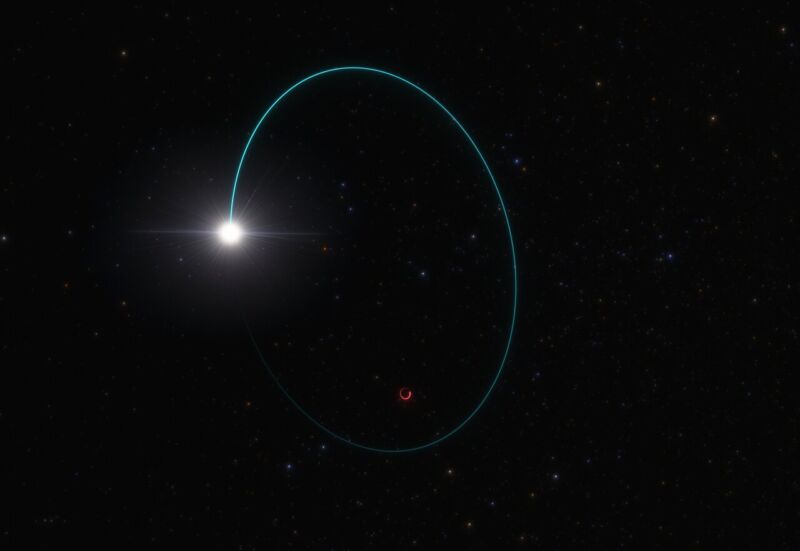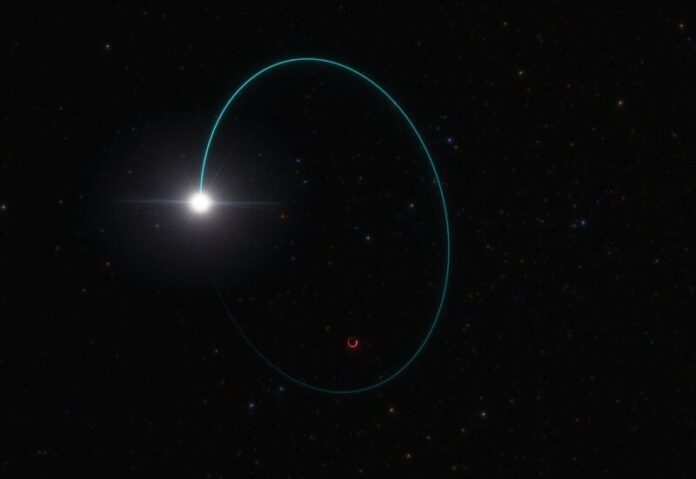
Enlarge / The star's orbit, shown here in light, is influenced by the far more massive black hole, indicated by the red orbit. (credit: ESO/L. Calçada)
As far as black holes go, there are two categories: supermassive ones that live at the center of the galaxies (and we're unsure about how they got there) and stellar mass ones that formed through the supernovae that end the lives of massive stars.
Prior to the advent of gravitational wave detectors, the heaviest stellar-mass black hole we knew about was only a bit more than a dozen times the mass of the Sun. And this makes sense, given that the violence of the supernova explosions that form these black holes ensures that only a fraction of the dying star's mass gets transferred into its dark offspring. But then the gravitational wave data started flowing in, and we discovered there were lots of heavier black holes, with masses dozens of times that of the Sun. But we could only find them when they smacked into another black hole.
Now, thanks to the Gaia mission, we have observational evidence of the largest black hole in the Milky Way outside of the supermassive one, with a mass 33 times that of the Sun. And, in galactic terms, it's right next door at about 2,000 light-years distant, meaning it will be relatively easy to learn more.
Read 14 remaining paragraphs | Comments
Ars Technica - All contentContinue reading/original-link]




